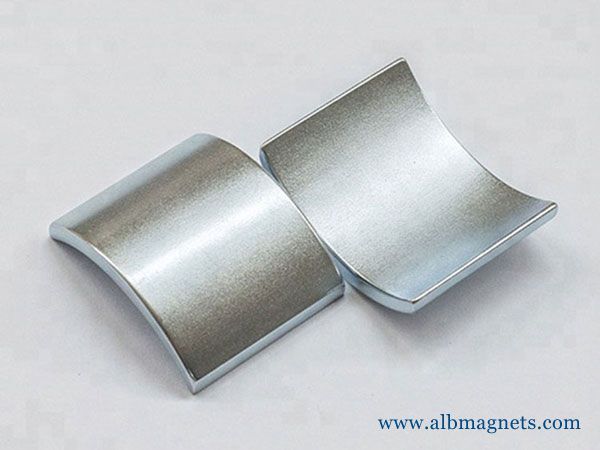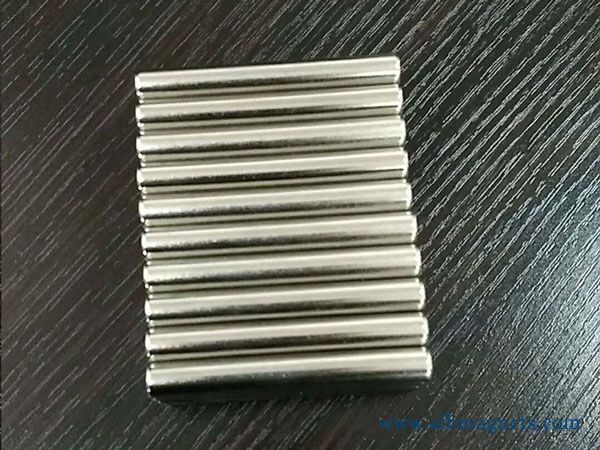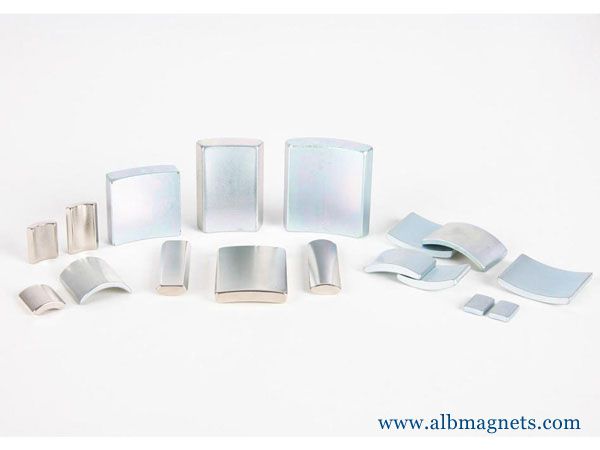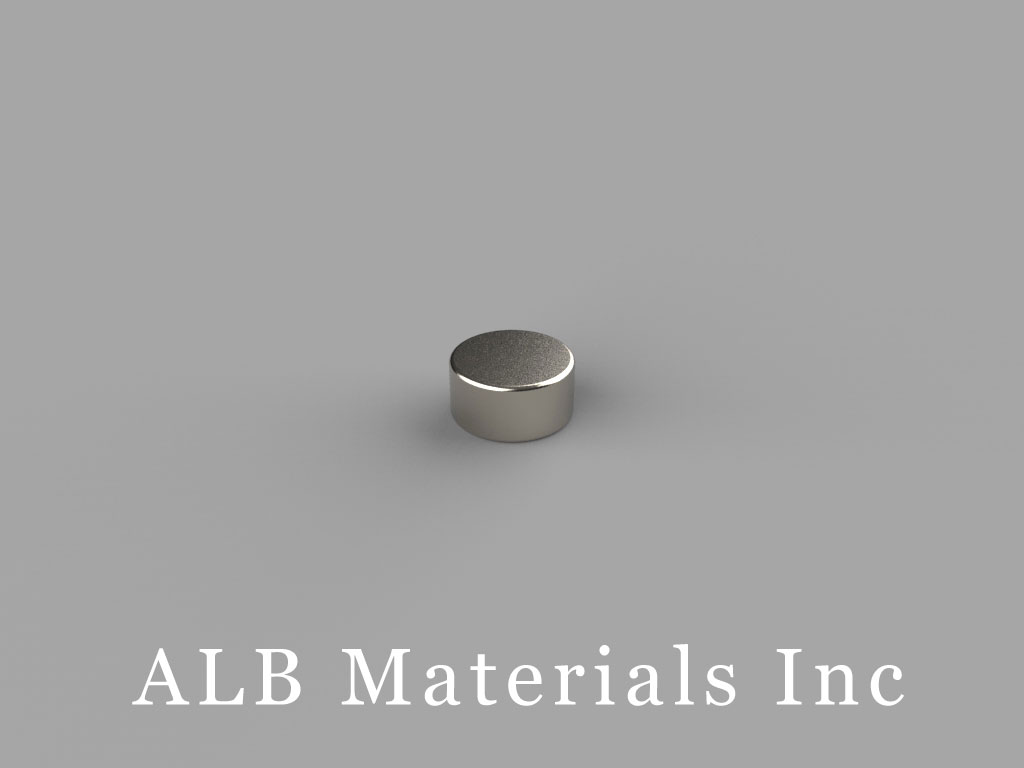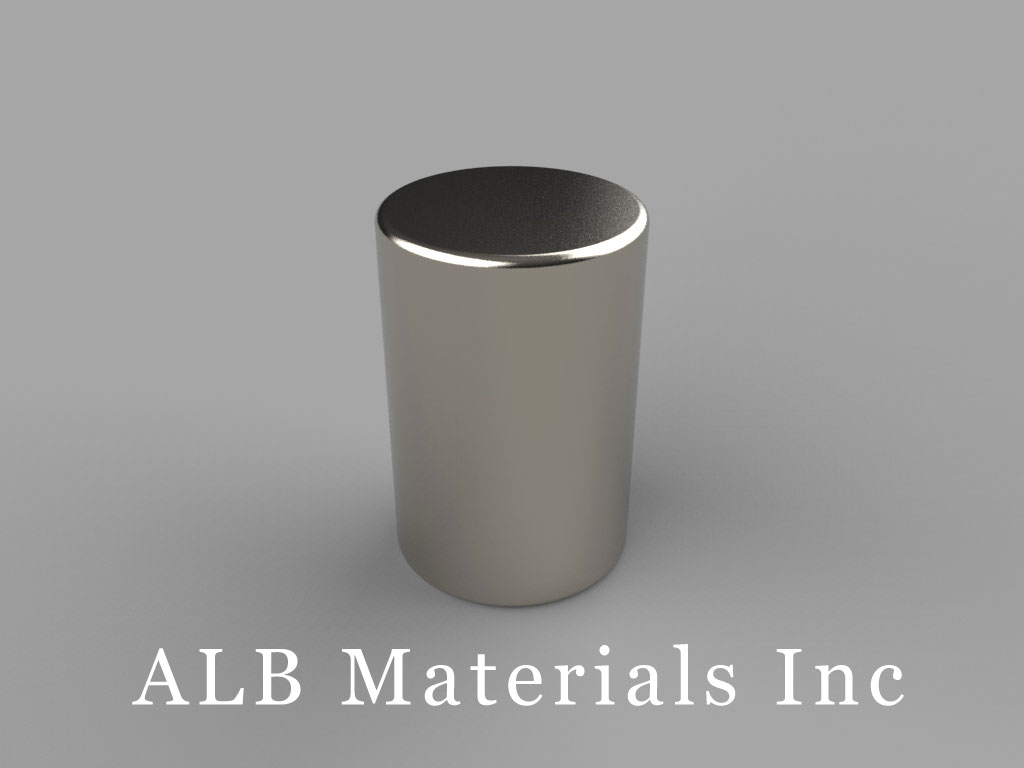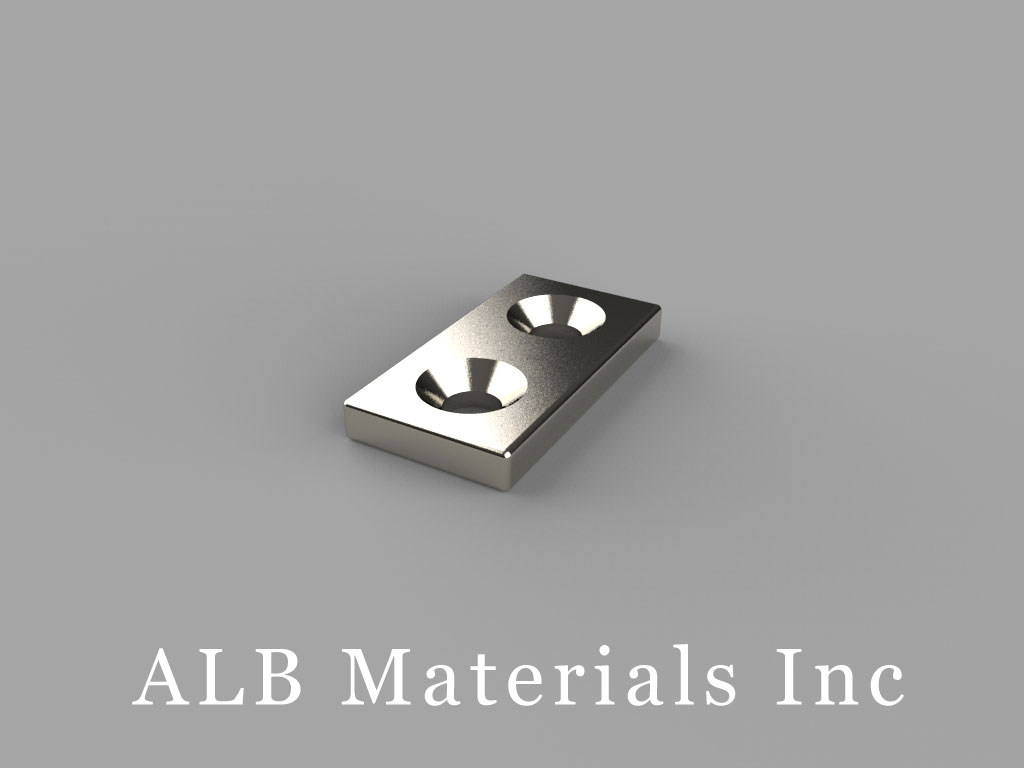401 Ryland St. Ste 200-A,
Reno, NV 89502
United States
E-mail: sales@albmaterials.com
- R822CS-P Neodymium Magnets, 1/2 inch od x 1/8 inch thick with countersunk hole for #4 screw
- D81SH Neodymium Magnets, 1/2 inch dia. x 1/16 inch thick
- B4x3x1.8mm Neodymium Magnet, 4 x 3 x 1.8mm Block Magnet
- D75x15mm Neodymium Magnet, 75 x 15mm Disc Magnet
- DFH2 Neodymium Magnets, 15/16 inch dia. x 2/10 inch thick
- DC6PC-RED Plastic Coated Neodymium Magnets
- R624 Neodymium Magnets, 3/8 inch od x 1/8 inch id x 1/4 inch thick
- B10x1.6x0.7mm Neodymium Magnet, 10 x 1.6 x 0.7mm Block Magnet
- BX044-N52 Neodymium Magnets, 1 inch x 1/4 inch x 1/4 inch thick
- B-W20H20L20-N45Zn Neodymium Magnet, 20x20x20mm Block Magnet
- B771 Neodymium Magnets, 7/16 inch x 7/16 inch x 1/16 inch thick
- D21x3.5mm Neodymium Magnet, 21 x 3.5mm Disc Magnet
- BC21 Neodymium Magnets, 3/4 inch x 1/8 inch x 1/16 inch thick
- MM-D-16 Metric Mounting Magnets
- DY03 Neodymium Magnets, 2 inch dia. x 3/16 inch thick
- B-W5H3L6-N45 Neodymium Magnet, 6x5x3mm Block Magnet
Magnetic Materials
Magnetic materials
Ferromagnetic materials are materials that have magnetic properties similar to those of iron. They can become permanently magnetized. Examples of ferromagnetic materials are nickel, cobalt, and alnico, an aluminum-nickel-cobalt alloy.
Magnetic fields are produced by currents. Permanent magnets are the result of "magnetization currents" flowing inside the material. The magnetization currents in materials are a consequence of the electron's orbital motion and spin. Electrons have an intrinsic property, called spin. Because they have spin, they have a magnetic moment, similar to a small current loop. Electrons by themselves act like tiny magnets. If you pick an axis, an electron's magnetic moment can either be parallel or anti-parallel to this axis. In an atom, the electrons are arranged in orbitals. An orbiting electron can have an additional magnetic moment similar to the magnetic moment of a tiny current loop. If all the magnetic moments of the electrons in an atom do not completely cancel out, then the atom will act like a tiny magnet.
When any material is placed into a magnetic field its atoms acquire an induced magnetic moment pointing in a direction opposite to that of the external field. The material becomes magnetic. This is called diamagnetism. The diamagnetic field produced by the material opposes the external field, but, except in superconductors, this diamagnetic field is very weak. If the atoms of material have no magnetic moment of their own then diamagnetism is the only magnetic property of the material and the material is called diamagnetic. Copper is such a material.
In paramagnetic materials, all the magnetic moments of the electrons in an atom do not completely cancel out, and each atom has a magnetic moment. However, in paramagnetic materials such as aluminum, neighboring atoms do not align themselves with each other in the absence of an external magnetic field. The magnetic fields produced by the individual atoms, therefore, cancel each other. An external magnetic field tends to align the magnetic moments in the direction of the applied field, but thermal motion tends to randomize the directions. The paramagnetic field produced by the aligned magnetic moments reinforces the external field, but at room temperatures, it is on average only approximately 10 times stronger than the diamagnetic field and therefore still very weak.
In ferromagnetic materials, the spins of neighboring atoms do align even in the absence of an external field (through a quantum effect known as exchange coupling), resulting in small (a tenth of a millimeter, or less) neighborhoods called domains where all the moments are aligned. In a non-magnetized piece of ferromagnetic material, the domains are randomly oriented. When a piece of ferromagnetic material is placed into an external magnetic field, two things happen.
The spins in each domain shift so that the magnetic moments of the electrons become more aligned with the direction of the field.
Domains aligned with the field expand and take over regions previously occupied by domains aligned opposite to the field.
In this way, the piece of material becomes magnetized.
Iron comes in two forms, hard and soft. Hard and soft are term describing the magnetic properties of the material. In hard iron, the domains do not shift back into their random positions when the external field is removed. In soft iron, the domains do shift back into their random positions when the external field is removed. To make permanent magnets a piece of hard iron is placed into a magnetic field. The domains align with the field, and they retain most of that alignment when the field is removed. Soft iron is used as a core in electromagnets. A wire is wound around an iron core. A current flowing through the wire coil produces its own magnetic field and magnetizes the iron. The magnetic field produced by the iron is much stronger than the field produced by the current in the coil. Typically an iron core magnifies the field by a factor of 100 to 1000. When the current in the coil is reduced to zero, the soft iron core loses its magnetization.
Magnetic effects are temperature sensitive. At higher temperatures, the atoms in the material have a higher average kinetic energy, and it is easier for interactions to misalign the spins. Above a critical temperature known as the Curie temperature, ferromagnets lose their ferromagnetic properties.
Forces between magnets
Macroscopically, magnets act like current loops. The internal "magnetization currents" produce a net "magnetization current" flowing along the surface of the material. (In the interior of the material currents flowing in opposite directions produce zero net currents.)
In an external magnetic field produced by another magnet or by a current flowing in a wire, magnets are therefore acted on by forces and torques. In a uniform external field, a current loop, and therefore a magnet, experiences no net force, but a net torque. The torque tries to align the magnetic moment of the magnet with the external field.
The magnetic moment of a magnet points from its south pole to its north pole.
In a non-uniform magnetic field a current loop, and therefore a magnet, experiences a net force.
The force tries to pull an aligned dipole into regions where the magnitude of the magnetic field is larger and push an anti-aligned dipole into regions where magnitude the magnetic field is smaller.
If the magnetic field is pointing into the z-direction, the force on a magnetic dipole in that field is given by Fz = μzΔBz/Δz.
Magnetic materials have in numerous ways played a major role in the development of modern civilization.
The earliest known application of a magnetic material is the compass, which was invented in China, probably during the Qin dynasty (221–206 BC).
It was made of a piece of natural, magnetized lodestone (magnetite) and was used by fortune-tellers and also, for example, for town planning.
The first existing description of the properties of magnets was written in 1269 in a letter to a friend by the French scholar Petrus Peregrinus de Maricourt.
He introduced the concept of magnetic poles and described the attraction and repulsion of magnets [1].
For centuries, the magnetic compass was used for navigation and became an important prerequisite for the exploration of our planet [2].
A major scientific and technological breakthrough was the discovery of the interaction between an electrical current and a magnetic compass needle (electromagnetism) by Hans Christian Ørsted [3], which became the basis for the development of, e.g., generators used for large-scale production of electricity and its application for numerous purposes, such as electromotors, electric light, telecommunication, and so on.
Another important milestone in the technological applications of magnetic materials was the invention by Valdemar Poulsen [4] of the magnetic tape recorder in which information was stored in a magnetic wire or tape.
This first demonstration of magnetic data storage became the basis for modern computer technology.
In an early theory of magnetism in solids, Pierre Weiss suggested that magnetic atoms are exposed to a molecular field due to magnetic interactions with the neighboring atoms [5].
He showed that this can give rise to magnetic ordering below a critical temperature, and his theory could qualitatively explain the temperature dependence of the magnetization.
However, the origin of the molecular field remained obscure for a couple of decades, because the classical magnetic dipole fields from neighboring atoms were far too small to explain magnetic ordering in solids at ambient temperatures.
In 1928, Werner Heisenberg [6] showed that exchange interaction between electrons, which originates from the Pauli principle, gives rise to effective interaction between electron spins.
This can explain the large molecular field estimated in earlier theoretical investigations and the occurrence of magnetic order in solids.
Thus, magnetic ordering in solids at ambient temperatures has a quantum mechanical origin.
Until around 1930, it was believed that all strongly magnetic materials were ferromagnetic, that is, all atomic magnetic moments were assumed parallel.
However, it was pointed out by Louis Néel [7] that magnetic structures could be more complex with, for example, opposite magnetic moments of the atoms either canceling fully such that the magnetization vanishes (in antiferromagnetic materials) or doing so only partly (in ferrimagnetic materials).
Magnetic neutron diffraction, discovered by Shull et al.
[8], later revealed a rich variety of magnetic structures in solids.
A special type of magnetic material, which also has attracted much attention, is spin glasses, in which the atomic magnetic moments are frozen in random directions [9].
In 1949, Louis Néel pointed out that very small particles of magnetic materials may be superparamagnetic at finite temperatures, that is, the magnetization direction may fluctuate because of thermal agitations [10].
In the second half of the twentieth century, the development of modern information technologies resulted in fundamental changes in our society, and this development would have been hard to imagine without magnetic materials because it relies on data storage in magnets.
It is noteworthy that many recent applications are based on the use of nanostructured magnetic materials, that is, thin films, multilayer structures, nanowires or small particles with dimensions on the nanometer scale, and with magnetic properties that often differ considerably from those of bulk materials.
A spectacular example is the discovery of giant magnetoresistance (GMR) in samples of nanometer-thick layers of iron and chromium by Fert, Grünberg, and coworkers [11,12], which led to the development of the GMR read heads that are used to read data from hard disks.
Among nanostructured magnetic materials, nanoparticles have several unique properties and are utilized for many technological applications, for example, in magnetic data storage media, where they are essential.
Ferrofluids, which are stable suspensions of magnetic nanoparticles, have numerous technological applications, and currently, there is a rapid development of applications of magnetic nanoparticles in biotechnology and in biomedicine.
Furthermore, it has been realized that magnetic nanoparticles play an important role in nature, as they are commonly found in soils and rocks and may store information on the Earth’s magnetic field in the past.
Magnetic nanoparticles are in several ways also important for the functioning of living organisms.
The magnetic properties of nanoparticles have been the subject of several earlier reviews [13–32].
In this chapter, we give an overview of the properties and applications of magnetic nanoparticles.
we discuss the domain structure in magnetic particles with special emphasis on single-domain particles, which are used for magnetic data storage.
A spectacular difference between magnetic nanoparticles and bulk materials is the occurrence of superparamagnetic relaxation, that is, thermally induced magnetization reversals in nanoparticles at finite temperatures.
This can make nanoparticles useless for magnetic data storage, but for other applications, it is desirable to use particles with fast superparamagnetic relaxation.
we give a brief outline of theories for superparamagnetic relaxation and how it can be studied by various experimental techniques.
At low temperatures, where superparamagnetic relaxation in nanoparticles is slow, the magnetic excitations in nanoparticles are dominated by uniform spin-wave excitations, and this results in the temperature dependence of the magnetization that is linear, that is, different from the temperature dependence of the magnetization in bulk materials in which other spin-wave excitations are predominant.
we give an outline of magnetic anisotropy in nanoparticles, which often differs considerably from that of the corresponding bulk materials and may be dominated by surface effects.
Most of the theoretical models for the magnetic dynamics in nanoparticles have been derived for noninteracting nanoparticles.
However, in practice, magnetic interactions, that is, dipole and/or exchange interactions between nanoparticles, often have a significant influence on the magnetic dynamics.
The magnetic structure of materials often changes when the particle size approaches the nanometer range.
The Curie and Néel temperatures of nanoparticles may differ from the bulk values, and other magnetic phase transitions can also be affected by the small size.
Core-shell nanoparticles, consisting, for example, of a metallic core surrounded by an oxide shell, show interesting magnetic properties such as exchange bias and enhanced coercivity.
Part of the content in this article is reproduced from other media for the purpose of transmitting more information and does not mean that this website agrees with its views or confirms the authenticity of its content. It shall not bear direct responsibility and joint liability for the infringement of such works.
If there is any infringement, bad information, error correction, and other issues in the content of this page, please contact us at info@albmaterials.com
Link to this article: https://www.albmagnets.com/blog/magnetic-materials.html
How to choose and buy a strong neodymium magnet? ALBMagnets is a professional company for strong magnet design and manufacturing,
providing you with reliable N35, N38, N42, N52, N42SH and other grade super neodymium magnets and SmCo rare earth magnets.




